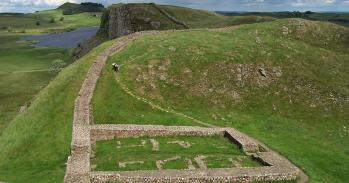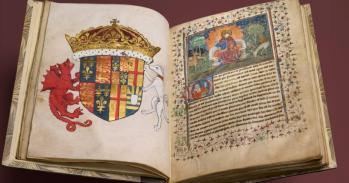
New evidence which reveals how the Vikings successfully blended into British and Irish culture long before they were consigned to history as barbaric raiders is to be presented at a Cambridge University conference.
New evidence which reveals how the Vikings successfully blended into British and Irish culture long before they were consigned to history as barbaric raiders is to be presented at a Cambridge University conference.
We know that the Vikings were part of a much wider process of cultural cross-fertilisation that changed Britain and Ireland forever.
Dr Ní Mhaonaigh
In a three-day event starting today (Friday, March 13th), leading scholars will unveil more than 20 cutting-edge studies which reveal how the Vikings shared technology, swapped ideas and often lived side-by-side in relative harmony with their Anglo-Saxon and Celtic contemporaries.
Together, the research further revises our standard image of the Vikings, who academics argue should be seen as an early example of immigrants being successfully assimilated into British and Irish culture.
"The latest evidence does not point to a simple opposition between 'Vikings' and 'natives'," Dr Fiona Edmonds, from the University of Cambridge's Department of Anglo-Saxon, Norse and Celtic, said.
"Within a relatively short space of time - and with lasting effect - the various cultures in Britain and Ireland started to intermingle. Investigating that process provides us with a historical model of how political groups can be absorbed into complex societies, contributing much to those societies in the process. There are important lessons that can be gained from this about cultural assimilation in the modern era," her colleague, Dr Máire Ní Mhaonaigh added.
The conference, entitled "Between the Islands", has been organised by the University's Department of Anglo-Saxon, Norse and Celtic and its Centre for Research in the Arts, Social Sciences and Humanities (CRASSH).
Drawing on a combination of new archaeological evidence, historical studies, and analysis of the language, literature and coinage of the period, it aims to illustrate how between the 9th and 13th centuries, the Vikings became an integral part of the fabric of social and political life which changed Britain and Ireland far more profoundly than is often realised.
The evidence shows that there was widespread cultural hybridisation, with culturally-mixed groups of Vikings and Celts or Anglo-Saxons engaged in ongoing and fruitful cultural exchanges. Papers being presented at the conference will cover topics including:
• Research into Scandinavian settlement in Ireland showing it to have been much more varied than was once thought. Interaction between Viking incomers and Celts can be detected in many of the camps.
• An examination of evidence for Scandinavian settlement in North-West England including archaeological remains (such as furnished burials) which point to early Viking settlements on the Cumbrian coast.
• A new analysis of personal names in the Domesday Book which suggests that settlements established in Yorkshire, on the path used by travellers voyaging between Viking Dublin and Viking York, retained their Gaelic-Scandinavian identity until the Norman Conquest.
• Investigations into Irish nautical activity indicating that it experienced a flowering in the tenth century perhaps in response to Viking prowess in this area. The key product of this development is "Skuldelev 2", an impressive Viking long-ship built in Dublin in 1042.
• Recent studies of regional coinage from the period, which show that Viking rulers developed economies influenced by cultures they encountered on arrival. In East Anglia, for example, (where there had been a well-regulated coin economy), they adopted a similar system, but in other areas, where there had been only limited coin circulation, they introduced a bullion economy instead.
• Evidence that those responsible for Ogam and runic inscriptions may have mutually influenced one another, as indicated by such monuments as stone crosses at Kilalloe (Co. Clare, Ireland) and Kirk Michael (Isle of Man).
• Analysis of Old Norse literary works which shows that some of their features may have been borrowed from Gaelic story-telling.
"There have been significant advances in our understanding of the impact that the Vikings had on Britain and Ireland in the early medieval period, and this conference shows that the three worlds were inexorably intertwined for hundreds of years," Dr Ní Mhaonaigh said.
"We know that the Vikings were part of a much wider process of cultural cross-fertilisation that changed Britain and Ireland forever. This information changes the way we understand the early history of our own islands."
This work is licensed under a Creative Commons Licence. If you use this content on your site please link back to this page.





